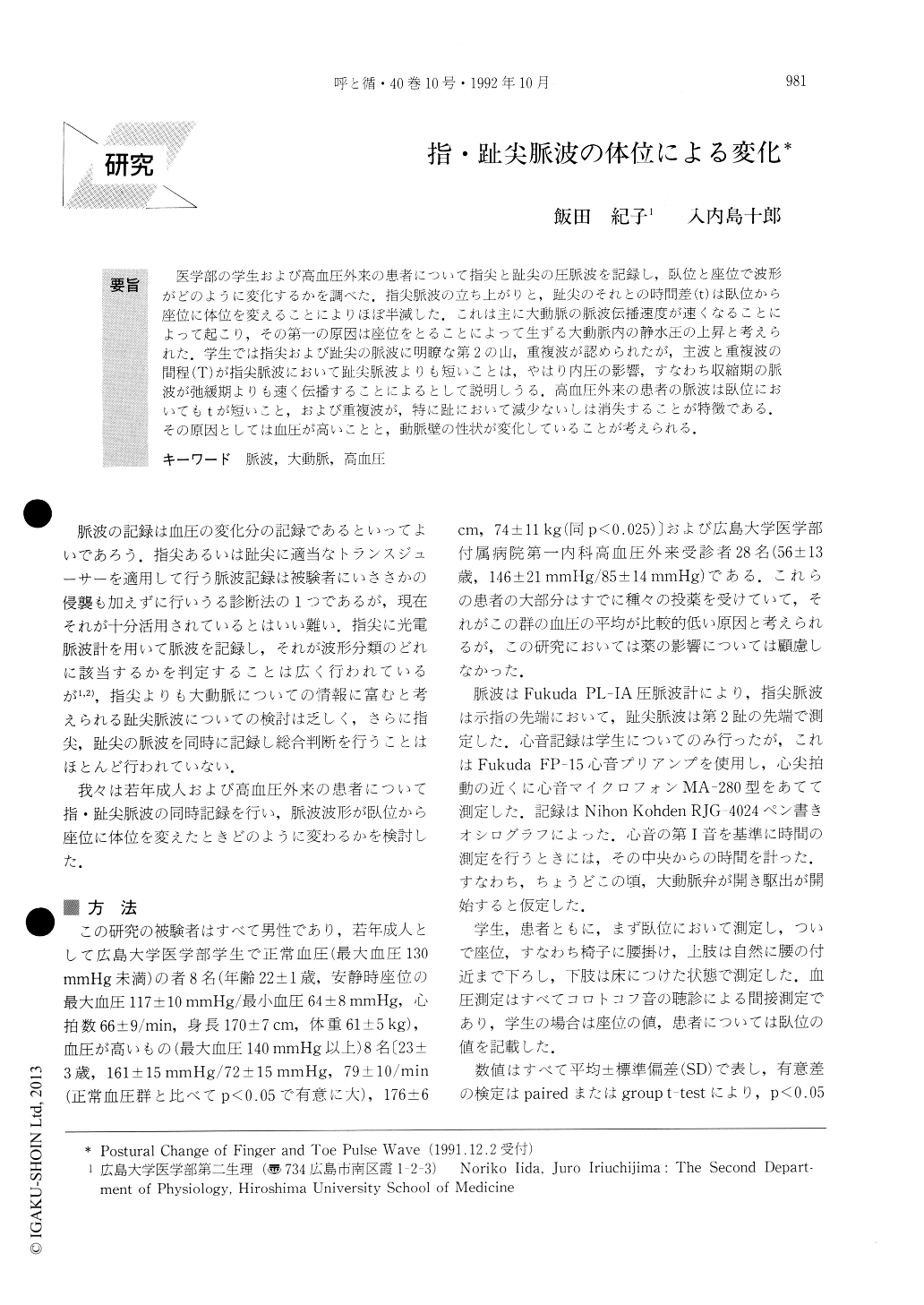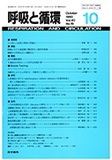Japanese
English
- 有料閲覧
- Abstract 文献概要
- 1ページ目 Look Inside
医学部の学生および高血圧外来の患者について指尖と趾尖の圧脈波を記録し,臥位と座位で波形がどのように変化するかを調べた.指尖脈波の立ち上がりと,趾尖のそれとの時間差(t)は臥位から座位に体位を変えることによりほぼ半減した.これは主に大動脈の脈波伝播速度が速くなることによって起こり,その第一の原因は座位をとることによって生ずる大動脈内の静水圧の上昇と考えられた.学生では指尖および趾尖の脈波に明瞭な第2の山,重複波が認められたが,主波と重複波の間程(T)が指尖脈波において趾尖脈波よりも短いことは,やはり内圧の影響,すなわち収縮期の脈波が弛緩期よりも速く伝播することによるとして説明しうる.高血圧外来の患者の脈波は臥位においてもtが短いこと,および重複波が,特に趾において減少ないしは消失することが特徴である.その原因としては血圧が高いことと,動脈壁の性状が変化していることが考えられる.
Finger and toe pulse waves were simultaneously recorded in medical students and outpatient hyperten-sive patients. The delay of the rise of toe pulse to that of finger pulse (t) was almost halved in students on postural change from the supine position to the sitting position. This was mainly due to an increase in the pulse wave velocity in the aorta, which was thought to be induced by the increase in hydrostatic pressure in the aorta. In students a marked dicrotic wave was obser-ved in both finger and toe pulse waves.

Copyright © 1992, Igaku-Shoin Ltd. All rights reserved.


